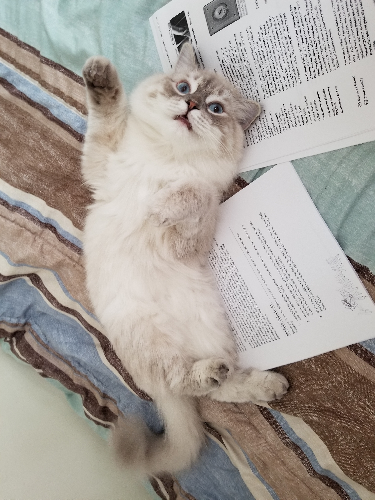June 2002 LSAT - Section 3 - Question 19
Which one of the following could be an accurate list of the swimmers of the first five laps, in order from lap 1 thro...
Replies

Mehran September 5, 2013
The setup video for this game is now live inside of LSATMax.Hope this helps! Please let us know if you have any other questions.

maonuo September 9, 2020
No it is not?
Victoria September 12, 2020
Hi @maonuo,Thanks for your message. I'm unsure why there is no video explanation available for this question.
I recommend contacting our support staff by tapping "support" from the left menu or by calling 855.483.7862 ext. 2 Monday through Friday from 9:00 a.m. to 6:00 p.m. PT. They'll be able to fix the issue for you if it's a technical problem. If there is no video explanation at all, they're always looking for input on how to make the program even better, so your request for a video explanation will be appreciated. The instructors specialize in helping with specific LSAT questions and private tutoring, so contacting the support team regarding your suggestions is best!
As for this specific question, I'm happy to run through the set-up and how you would get to the correct answer for this question.
We know that a swim team has exactly five members: J, K, L, M, and O.
The team swims a ten-lap relay race with each team member swimming exactly two of the laps.
Member 1 swims laps 1 and 6.
Member 2 swims laps 2 and 7.
Member 3 swims laps 3 and 8.
Member 4 swims laps 4 and 9.
Member 5 swims laps 5 and 10.
1 2 3 4 5 1 2 3 4 5
1 2 3 4 5 6 7 8 9 10
Now let's go through our conditions.
Rule 1 - neither of K's laps is immediately before either of L's.
This means that K and L cannot swim consecutive laps.
Rule 2 - J does not swim lap 9
This means that J cannot swim lap 4 either.
Rule 3 - O's first lap is after (but not necessarily immediately after) M's
This means that O cannot swim the first lap nor can M swim the fifth lap.
Rule 4 - at least one of J's laps is immediately after one of O's laps
This one is a bit tricky. There are two possibilities here.
Option 1: if J's first lap is immediately after O's first lap, then both of J's laps will be immediately after O's laps.
If this is the case, then J cannot swim either the first or the second lap because of Rule 3.
Option 2: if J's first lap either precedes or follows (but not immediately) O's first lap, then J's second lap must be immediately after O's first lap.
If this is the case, then J must swim the first and the sixth lap as this is the only possible way for J's second lap to immediately follow O's first lap.
Now let's go through the answer choices. We are looking for the answer choice which outlines an accurate list of the swimmers who swim laps 1 through 5.
We can eliminate answer choice (E) as it violates Rule 1 because one of K's laps immediately precedes one of L's laps.
We can eliminate answer choice (B) because it violates Rule 2. If J does not swim lap 9, then they cannot swim lap 4 because we know that the member who swims lap 9 also swims lap 4.
We can also eliminate answer choice (D). It violates Rule 3 because O's first lap is before M's.
Finally, we can eliminate answer choice (C) because it violates Rule 4. We know that there are only two options which will satisfy this rule. J's first lap does not immediately follow O's first lap here, so we are looking at Option 2 outlined above. J's first lap precedes O's first lap; therefore, J's second lap must be immediately after O's first lap. We know that this is not the case because J swims the third and eighth lap in this scenario. Therefore, answer choice (C) cannot be correct.
This means that answer choice (A) must be our correct answer, but let's double check.
J K M L O J K M L O
1 2 3 4 5 6 7 8 9 10
Notice that this satisfies all of the conditions:
1) Neither of K's laps (2 and 7) is immediately before either of L's laps (4 and 9)
2) J does not swim lap 9 as they swim laps 1 and 6
3) O's first lap (5) is after M's (3)
4) At least one of J's laps (6) is immediately after one of O's laps (5)
Hope this helps! Please let us know if you have any further questions.